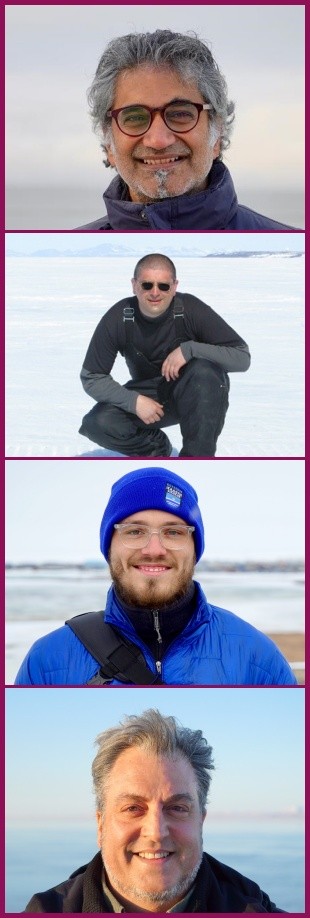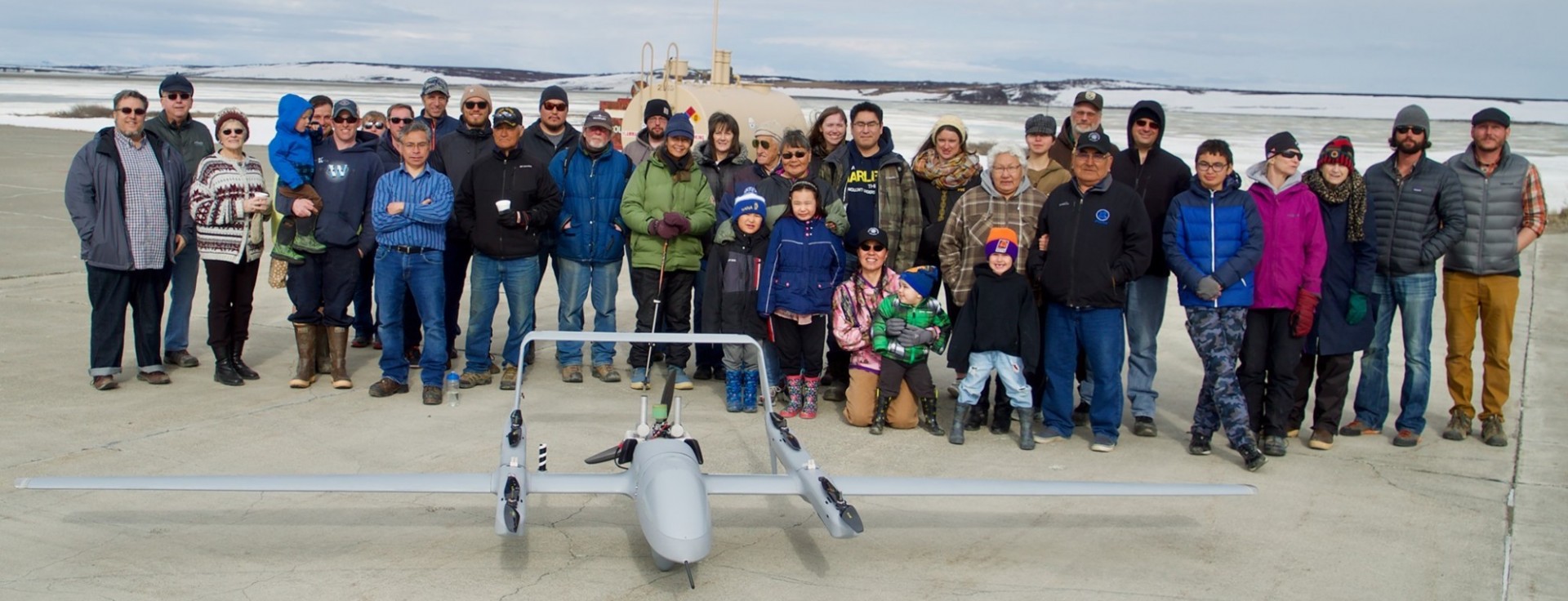Community Climate Science in the Arctic Circle
No issue better showcases the importance of combining science and society than climate change. This massive obstacle is both the cause and effect of many cultural, political, and environmental realities we now face. Any potential solution needs to transcend these boundaries. With that in mind, our newsletters this semester will be shining the spotlight on efforts to combat climate change via environmental justice. Many CSS faculty, students, and scholars are considering how climate change disproportionately affects marginalized communities and working to find solutions.
Our Climate and Society series is an example of that commitment. On February 7, we were joined by Lamont research professors Ajit Subramaniam and Christopher Zappa, earth and environmental sciences PhD student Carson Witte, and Director of the Native Village of Kotzebue’s Environmental Program Alex Whiting for Co-production of Knowledge and a Path for Inclusive Climate Change Science. The four scientists recounted their experiences with the Ikaaġvik Sikukun (Ice Bridges) project in Kotzebue, Alaska and the importance of co-production of knowledge with affected communities. Only a few weeks earlier, the project had celebrated the release of its documentary, Ice Edge - The Ikaaġvik Sikukun Story.

Founded in 2017, the Ikaaġvik Sikukun project brings together Indigenous experts from Kotzebue and academic climate researchers. In response to the extreme changes in sea ice cover on the Kotzebue Sound, the team investigated both the underlying conditions and the environmental impact on the community. While working on the project, the group hoped to shape a precedent for bridging the gap between Western and traditional forms of knowledge in future locally-engaged research.
While the scientific group and Elder Advisory Council made up the core team, the project immediately realized the importance of the role of the wider community. They reached out to locals via radio broadcasts and presentations at community centers, sharing their research goals and recruiting workers to conduct weekly ice observations. Fostering community participation and relying on the traditional knowledge from the Elder Advisory Council was crucial. According to Subramaniam, the key to co-production lies in the collaborative development of research questions, which guided the project over the next three years. One of the researchers featured in the documentary, Nathan Laxague, described the rarity of this project. “The traditional knowledge component of listening to the community leaders, listening to the elders, understanding their wisdom and then using that to inform our scientific hypothesis … [is] an incredible opportunity scientifically and then also in terms of giving us the opportunity to push the envelope.” Questions regarding marine mammal life and lack of sea ice originated directly from the lived experience of Indigenous hunters, and their knowledge also helped the team avoid the dangers of traveling over thinner ice during expeditions.
Despite the scientific rigor of this work, Subramaniam recounted the challenges for community-engaged research groups. “It is still very much of a struggle to basically convince my peers that good science will come of this.” Meanwhile, there is limited funding available for projects focused on co-produced knowledge. Whiting noted that academic and government funding sources rarely allow for the time and money required to build an equal, collaborative, and iterative relationship for this type of research. “There’s a lot of potential value in that knowledge to advance understanding.” This frustration with a unidimensional lens of what constitutes “science” and “expertise” was echoed by Indigenous Elder Advisor John Goodwin in the documentary. “Pretty much every time we try to acknowledge our traditional knowledge. Traditional knowledge, which they claim is invalid, basically because there’s no documentation of what we know.” Indigenous communities have often privileged oral history over the written word. This tradition helped inspire the creation of the Ice Edge documentary, which mimics this form of recording keeping.

The project’s name reflects this collaborative methodology. Ikaaġvik Sikukun translates to “ice bridges,” symbolizing the pathways created when Western and Indigenous knowledge combine. The process of building these bridges was just as important as the end results. Researcher Andy Mahoney stressed in the documentary that co-production requires participation at all stages. “You can’t put it in halfway through or tack it onto the end. It has to be there from conception.” To ensure other Indigenous groups are able to create their own co-production projects, the village has shared toolkits and guidelines. The process has made the results that much stronger, applicable, and accessible.
Each Kotzebue resident receives a hard copy of the quarterly newsletter, which features key points from the project’s results that could affect daily life in the village along with insights from the Elder Advisory Council. And as the ice thaws, the project posts daily sea ice conditions to their Facebook page, a widely popular resource for residents looking to plan their daily travel. With sometimes more than 6,000 views a day, Whiting said, “It's the number one success story when it comes to the community crying out for the results of our scientific investigation.”
Beyond the day-to-day, the project also looks to the future; their long-term goal is to leverage their ice cover findings to influence policy and create solutions for cities like Kotzebue. At the close of the documentary, Indigenous Elder Advisor Bobby Schaeffer shares his hopes, “I want to see my great-great-grandchildren. I want them to wake up to an air fresh, livable…I want them to go out and enjoy everything I see when I’m out in the country. The animals that we take to survive by, I want them to be there too. If we don’t do anything, there’s going to be nothing out there.”
For more information on other Climate and Society events, please visit our series landing page. Our News page also contains stories relating to environmental justice and will be updated as the semester progresses.
Video thumbnail image courtesy of the Ikaaġvik Sikukun (Ice Bridges) project.
